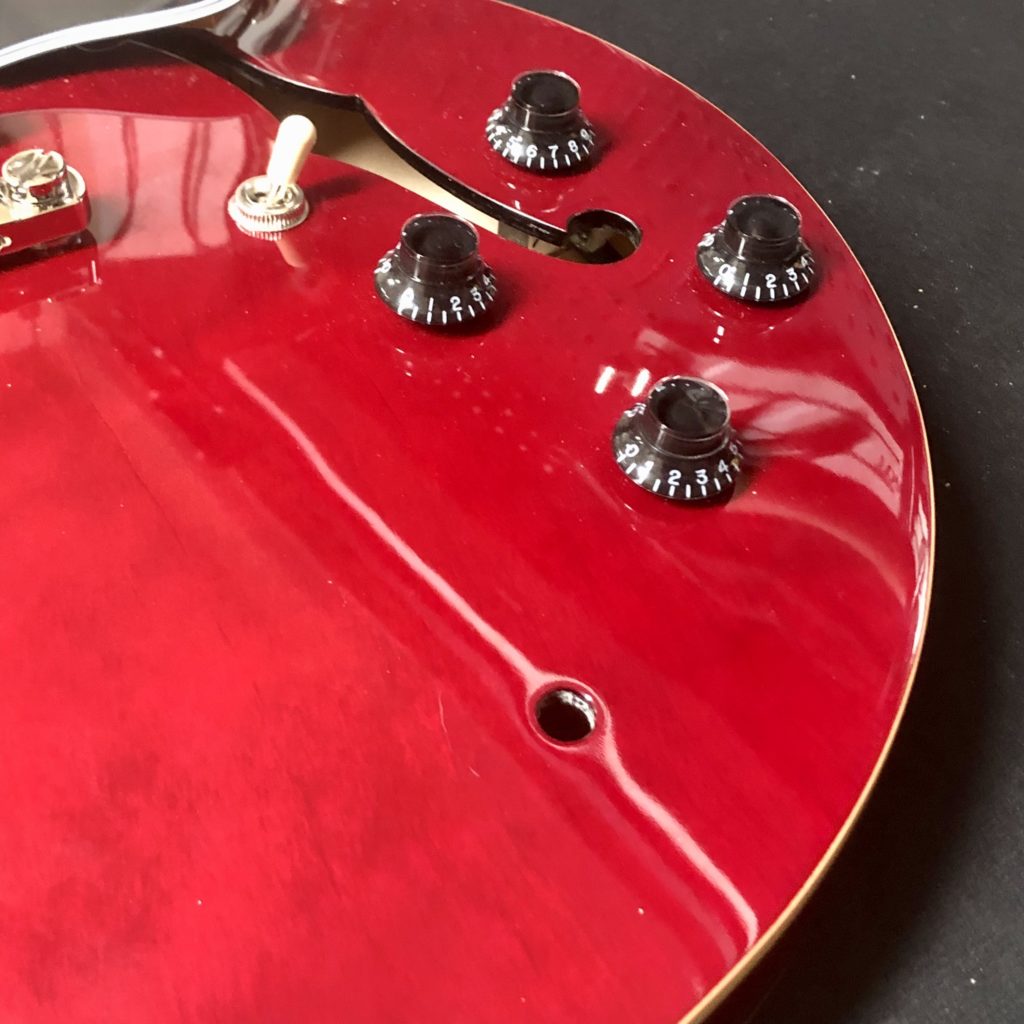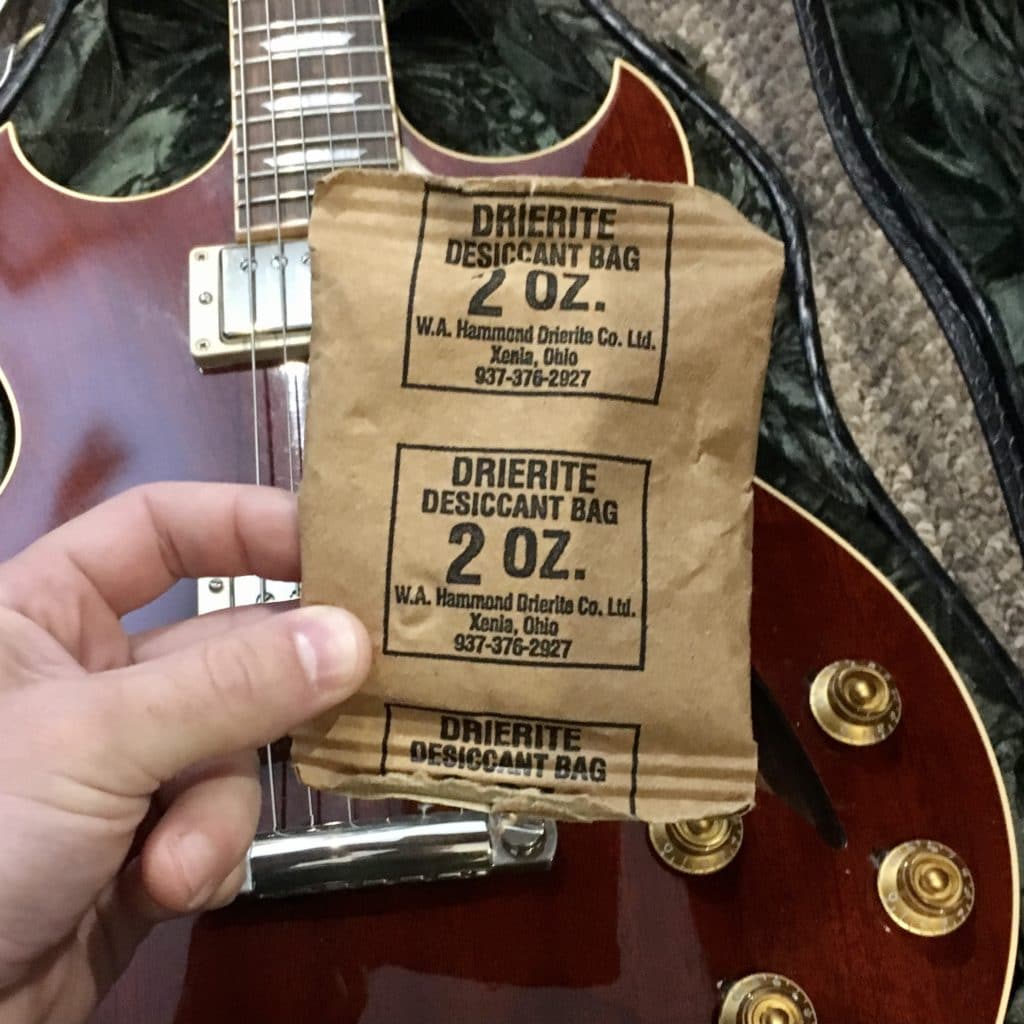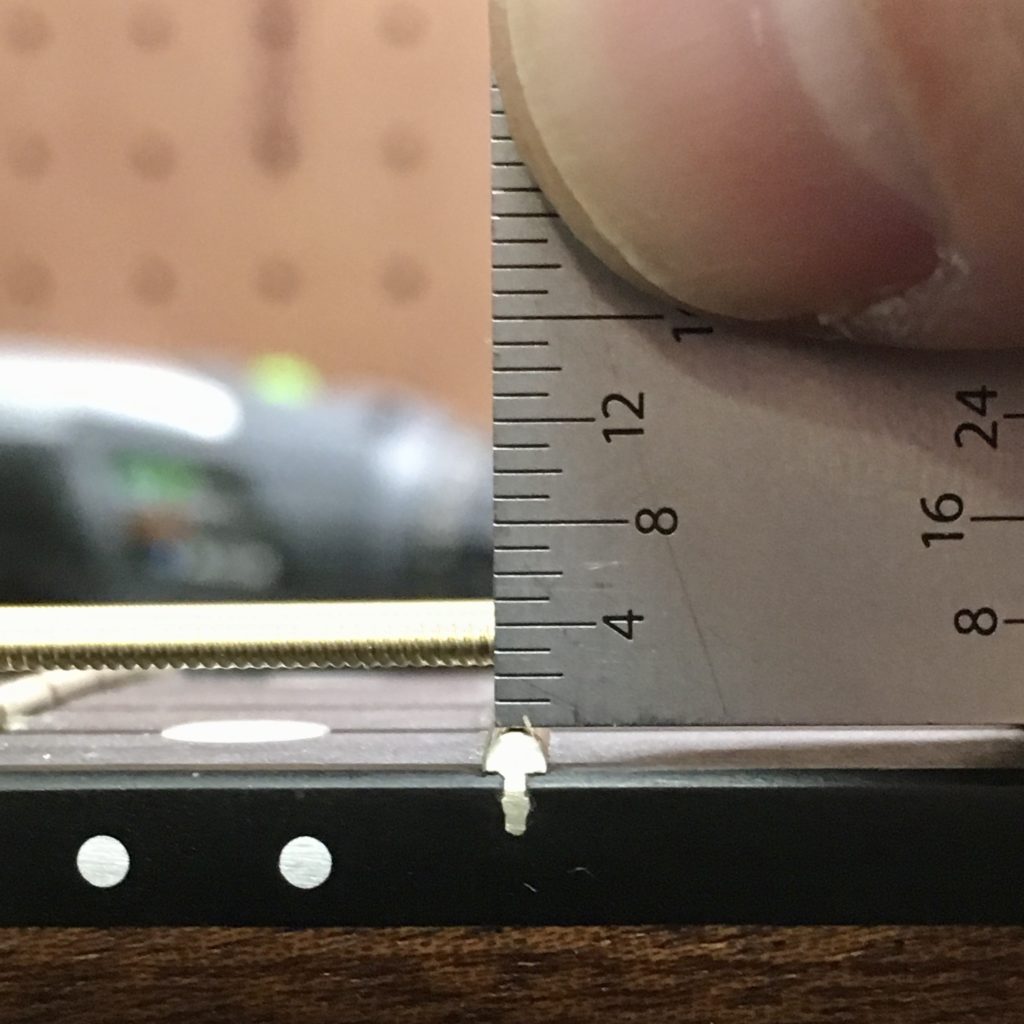Electric Guitar Neck Shims
When performing a setup on a bolt-on necked electric guitar, shims are a way to quickly adjust the angle at which the neck joins the body, facilitating the desired action adjustment.
We commonly find improvised shims installed in the neck pocket. They range from purpose-built plastic shims to a hodgepodge of items like sandpaper, cardboard, and/or guitar picks. In our shop, we prefer to make make full length, angled, shims.
Electric Guitar Neck Shims Read More »








